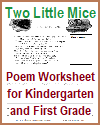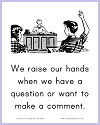| Share the learning joy! |
Preparing Students for College |
| www.student handouts.com > Study Games > Printable Learning Games |
There are three particular types of college entrance/credit
exams–the ACT/SAT, AP tests, and exams designed by universities. |
Dozens of guidebooks have been published with ACT/SAT testing
tips and other information. Most of these are designed for
students and parents, not for classroom teachers. So what should
teachers know? |
If you went to college, you took the ACT or
SAT or both, so you know what these tests
entail. Try your best to integrate SAT/ACT-style
questions into your tests and courses,
especially (but not only) if you are teaching
college-bound students. Your school district may
not include vocabulary in high school English
courses, but every successful honors-level
teacher includes weekly vocabulary as part of
her/his courses. Your students (and their parents) will thank you when students earn higher than average verbal scores. There are weekly vocabulary lists and handouts available here. |
Anyone assigned to teach an AP course should be familiar with
the course's content and testing procedures. Follow these as
closely as possible. AP courses are designed to duplicate the equivalent college-level courses. However, the nature and structure of the AP program typically makes AP courses much more difficult than their college-level equivalents. After all, a college course meets two or three days a week, almost no one does the reading (let's be honest), and there are only a few assignments and tests to do over the entire semester. As much as you want to "cram" everything into your course, please be realistic. No AP student should be given two hours of homework every night. A great number of colleges have incoming freshmen take placement tests. The most important and common of these are writing tests. Your students (and their parents) will blame the student’s high school if the students fail these tests (and the kids are stuck in a remedial freshman writing class). You do not want this to happen. Even though these kids have graduated and are no longer "your problem," their success or failure reflects upon your school and your teaching. |
The "five-paragraph essay" is the cornerstone of the
entrance examination essay. Students must answer a given
question in five paragraphs–one introductory paragraph,
three content paragraphs, and one concluding paragraph.
Often, students must cite sources within their essays. |
Teach students how to write neat, concise, cited
essays. |
Go over citation styles and plagiarism with your
students. Students should know to never plagiarize
anything whatsoever. Students should know that different
academic disciplines utilize different citation
formats–English teachers use MLA in English writing, but
use APA in their education courses. Historians and
political scientists may use a mixture of APA and
footnotes. The important objective in citing sources is
not correctly placing each comma or period, but stating
where information was found so that this information can
be verified by the reader. Each high school graduate should be capable of: (1) reading a question and understanding what the question is asking; (2) organizing her or his knowledge regarding the answer into some sort of outline (mental or written); and (3) transferring this outline into organized paragraphs that contain coherent, complete sentences. If your students can effectively complete five-paragraph essays, they will not be stuck in "English 099" for freshman year. They will thank you. Their parents will thank you. Your school will be respected. |
 |
|---|











